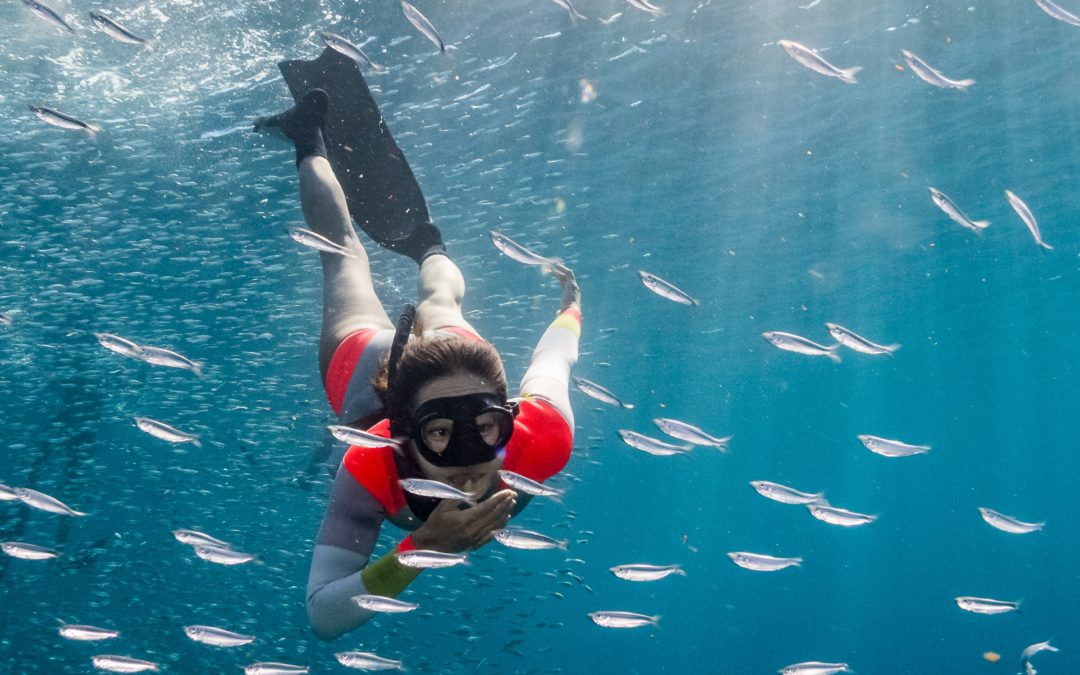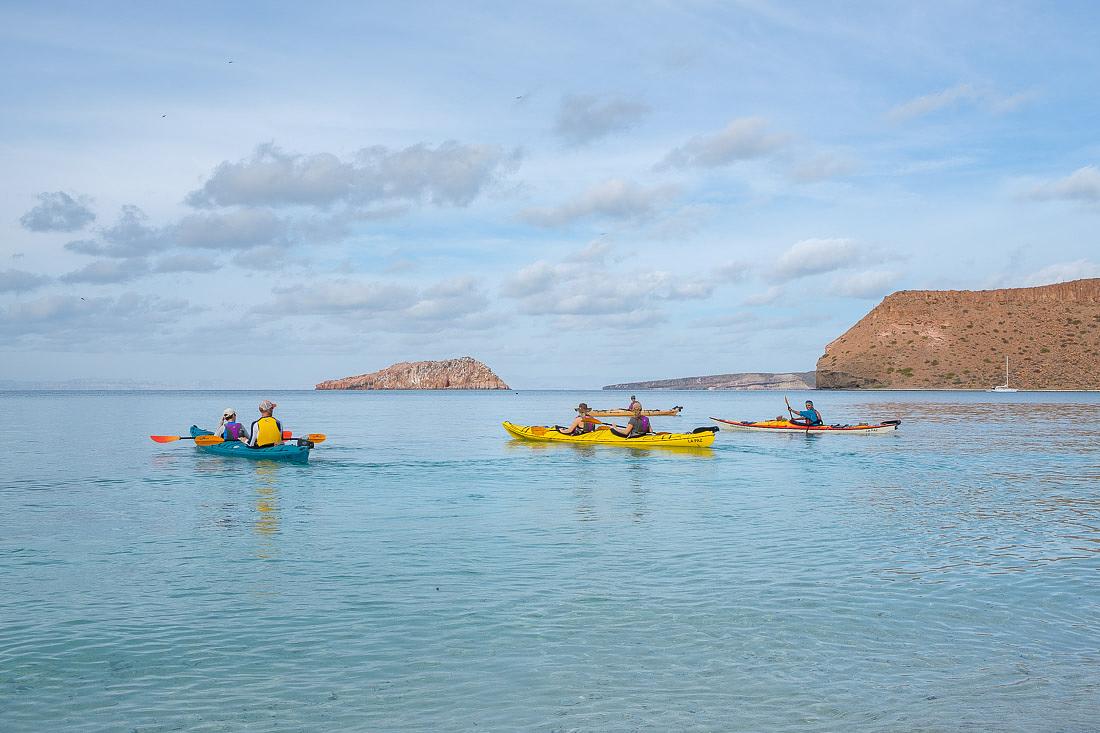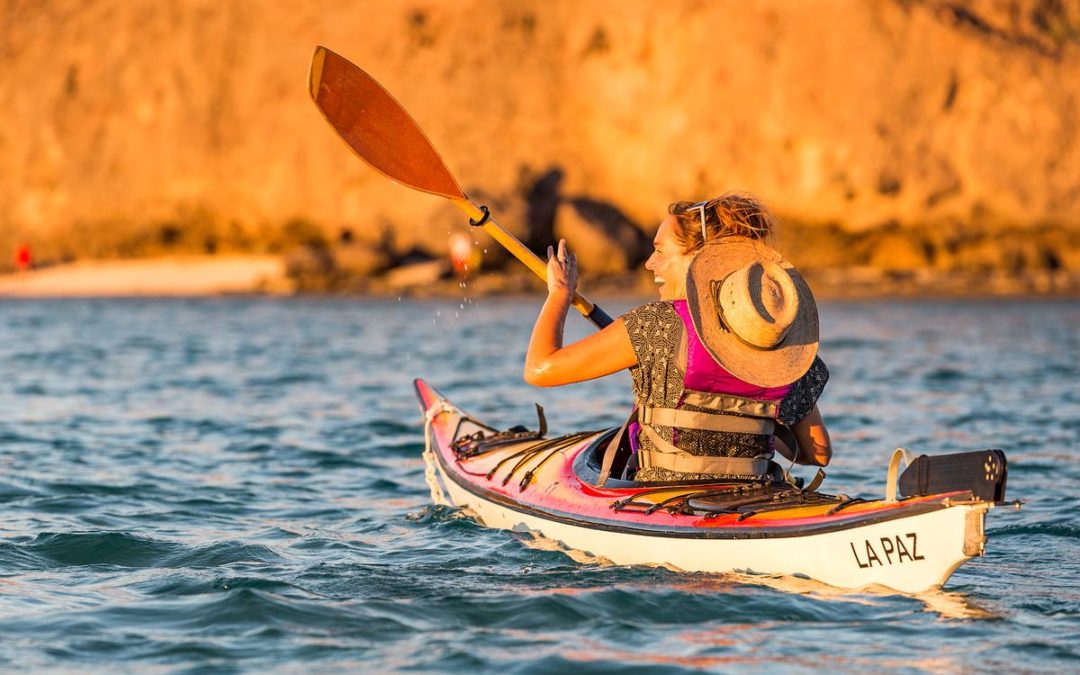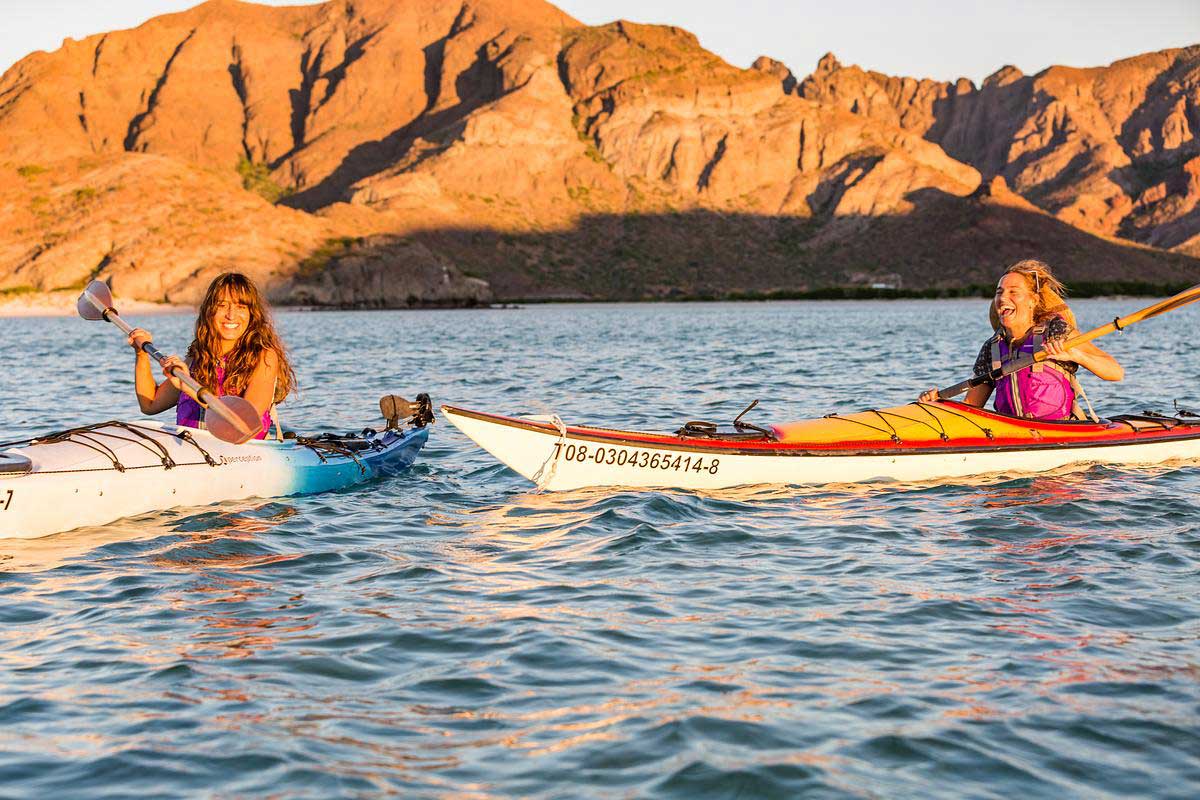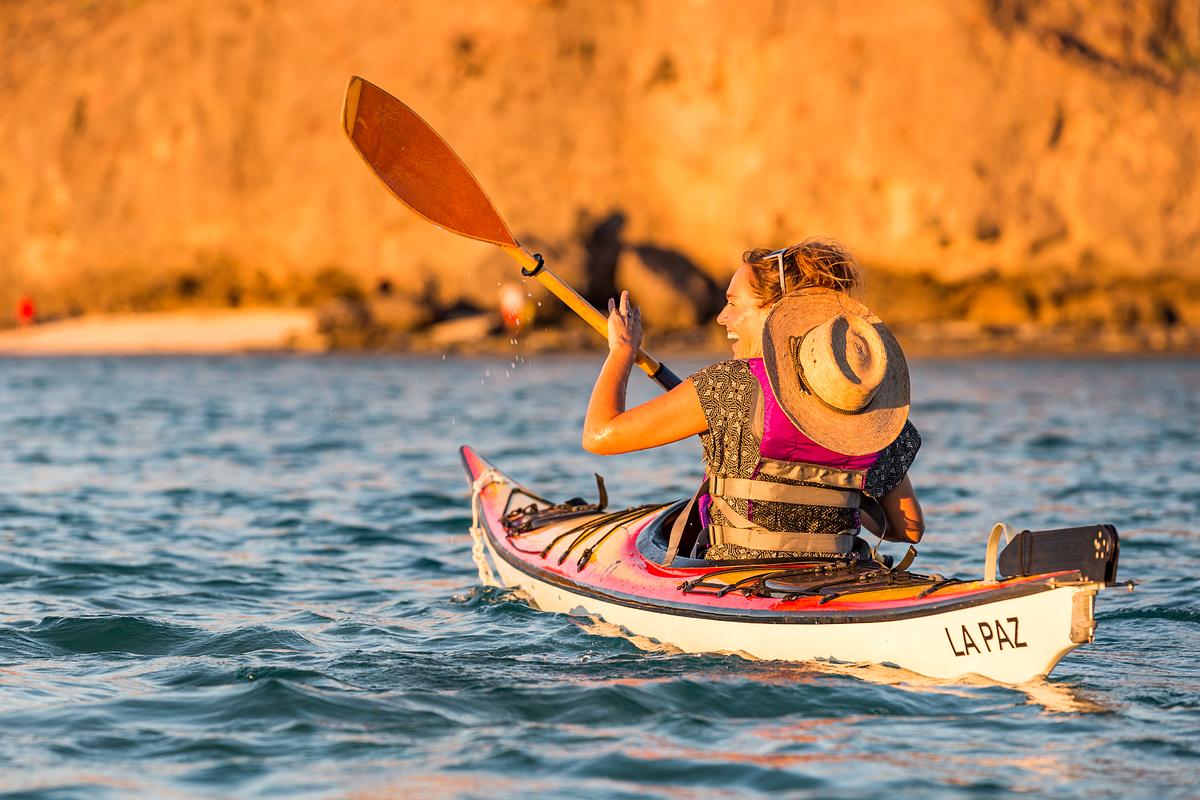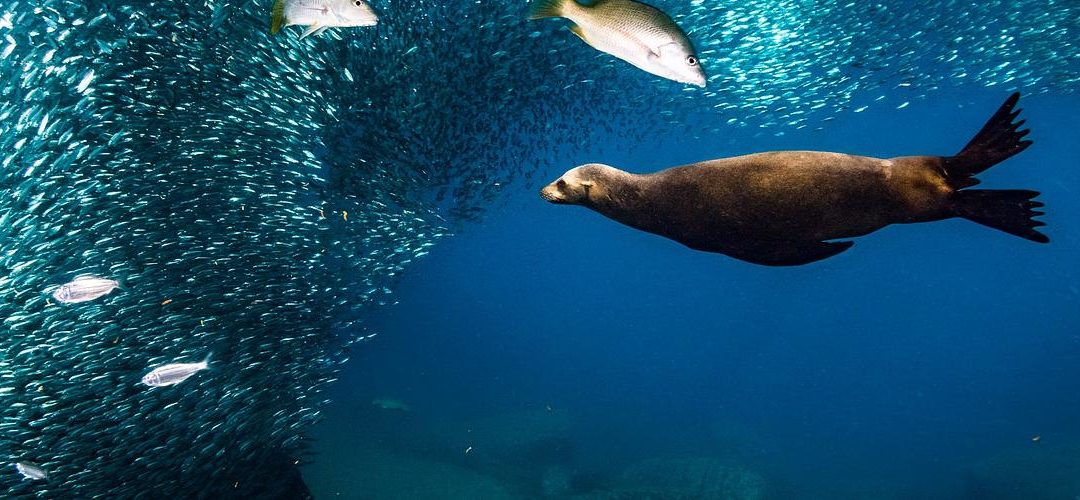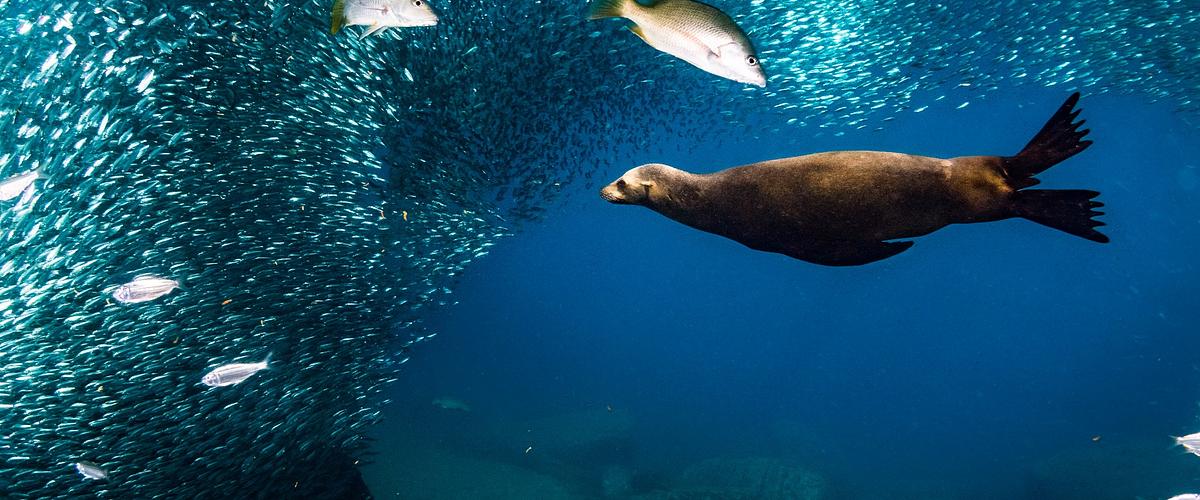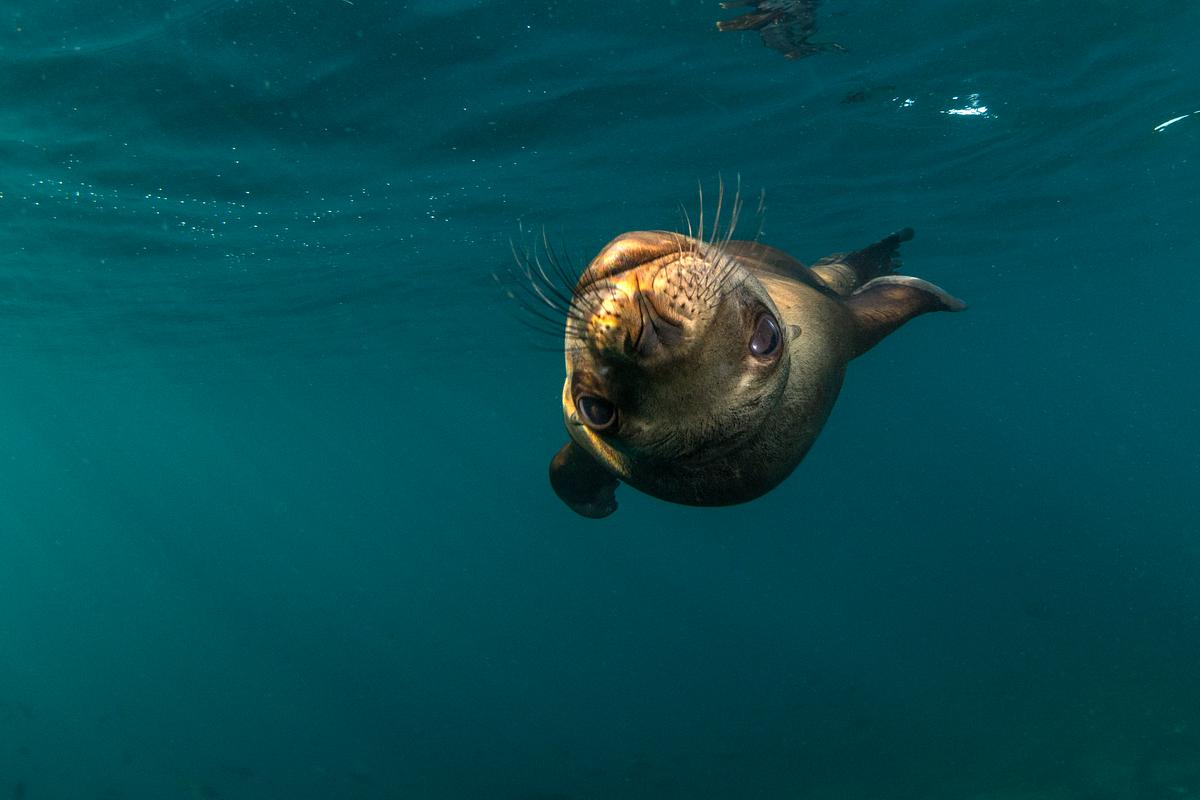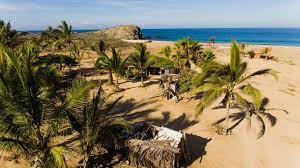
by Bryan Jáuregui | Adventure, Arts & Culture, Conservation, Geology, History, Plants, Ranchero Culture, Sports, Whales, Wildlife
A tumultuous, exhilarating, infuriating and irrevocable shift of population, outlook, culture and vision is sweeping the lower part of the Baja peninsula. Some residents who have been here for a time are eagerly embracing the evolution, spreading the new concepts one joyous Instagram post after another. Others remain faithful to the old days and ways, testily resisting the transformers one grumpy Todos Santos Newsfeed post after another. Who is really a Todos Santeño? Paraphrasing Colson Whitehead’s beautiful tribute to New York, “No matter how long you have been here, you are a Todos Santeño the first time you say, ”That used to be Café Santa Fe” or ”That used to be Santana’s.” … You are a Todos Santeño when what was there before is more real and solid than what is here now….You start building your own private Todos Santos the first time you lay eyes on it.”
For Greg Schredder the first time he laid eyes on Todos Santos was in 1961 from the sea, but he’d been driving down the Baja peninsula for a couple of years by then. “A bunch of us southern California surfers started coming to Baja in 1959” recalls Greg. “Because there was barely a road and certainly no gas stations at that time, we retrofitted our old truck with a custom-built 55-gallon gas tank and brought what we called our Tijuana credit card, a one-inch tube that we’d use for siphoning the gas we bought at the ranches. The ranchers were always incredibly welcoming and ready to help us with gas and anything else we needed. Of course, we didn’t always find them in time and we were often stranded for days. We didn’t care, we were just always looking for waves.”
The fishermen were equally welcoming. “We would travel with 10-pack cartons of unfiltered, Delegado cigarettes, and one carton would get us up to 50 pounds of lobster. Everything was so abundant then. We’d actually get tired of eating lobster and so we’d use it as bait to go fishing. It was not uncommon to see 600-pound groupers in the Pacific lagoons in those days, and the fishermen would actually catch these giants with their hand lines. We loved staying in the fishing villages on these trips. We would surf, dive, fish, and learn incredible stories of these people living in the most remote locations. You could hear your heartbeat for a quarter mile it was so quiet and still. We would always bring baseballs, gloves and Playboy magazines, and we made friends and had a great time everywhere we went.”
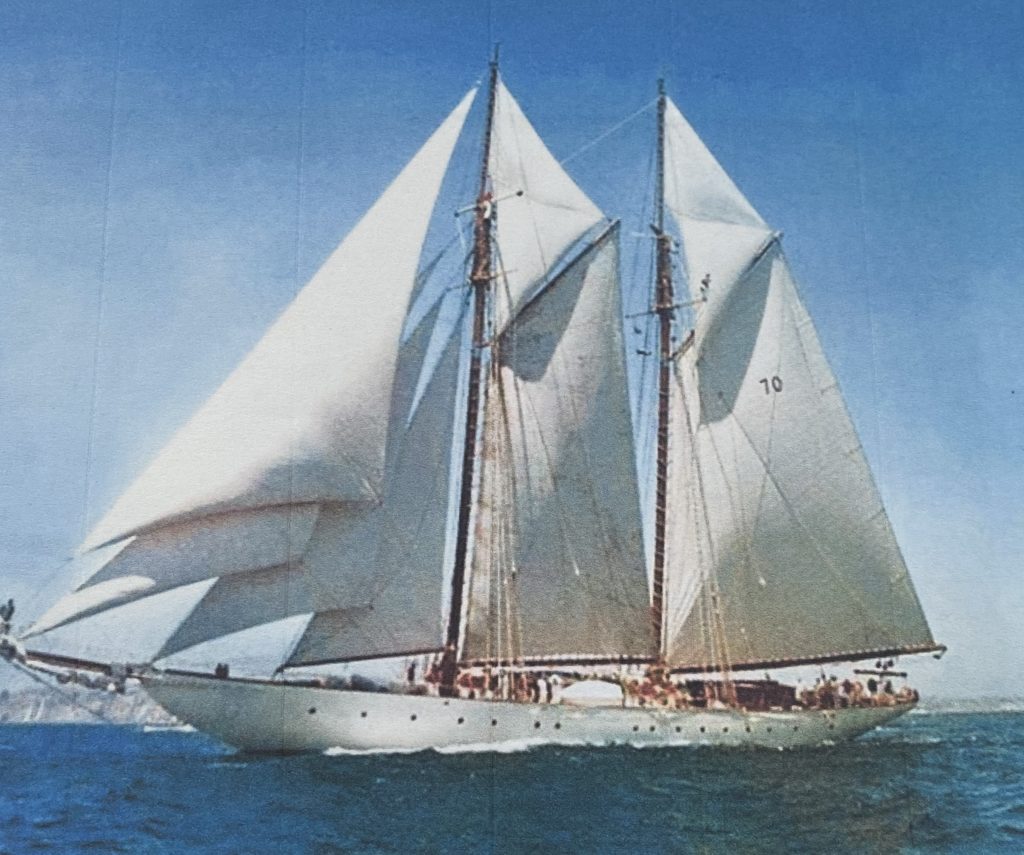
Greg’s introduction to Todos Santos was rooted in much more glamorous transportation than the type that required a Tijuana credit card. “In the 1950s and 60s, most of us surfer kids in Newport, California worked on the yachts of famous people like André Previn, Julie Andrews, and Humphrey Bogart to make money, and they really treated us like family. In 1965 I came to Cabo on Ralph Larrabee’s yacht, Goodwill, and stayed for about a month. At that time Cabo was really just a small village with no electricity. Larrabee’s friends like Donald Douglas (of Douglas Aircraft fame) and John Wayne would fly in to spend a few days partying and fishing, then fly back home. It was during these downtimes that I first explored the Pacific Coast between Cabo and Todos Santos. It was a surfer’s paradise.”
Greg’s friendship with the likes of Douglas and Wayne ended up lasting decades and inspired many of his business ventures across Mexico and Costa Rica. “I would often travel with them over the years, and they are the ones who motivated me to get a real job. As a surfer and diver I decided to set up factories in La Paz and Tijuana to make rubber products related to those activities. We expanded that business into setting up factories for many Fortune 500 companies who needed inexpensive, repetitive labor. We were the largest employer in La Paz and Ensenada for over 20 years. Of course, before the highway came in, it could take up to 2 days to drive to Todos Santos for some surfing.”
“I have always loved the Pacific side of Baja, and in 1979 I bought Rancho Gaspareño, 50 acres of remote land along a quarter mile of the Pacific coastline, not too far from Todos Santos. One of the people who drew me to the area was Carmen Salgado Agramont. She had a little cantina with a hitching post out front for horses where she’d serve up warm beer and hot food. She was quite savvy, and bought the first gas refrigerator in the area. She almost couldn’t keep up with ranchero demand for cold beer after that, and there were always dozens of horses around her cantina. I loved that place, and it was Carmen’s son who set me on the path to buying the ranch, which actually has the name and signature of Benito Juarez on the original land grand title. Since then I’ve been growing coco palms on the ranch, and have also been experimenting with growing plants from Hawaii like breadfruit that have excellent potential in Mexico.”
Greg loves the history of the area. “Rancho Gaspareño was named after a Spanish galleon that went aground on the point, the Gaspareño. It was one of the so-called Manila galleons, Spanish ships that sailed between the Philippines and Acapulco for 250 years, bringing spices, silks and other luxuries from the far east to New Spain. All these galleons sailed the Pacific coast of Baja on their way to Acapulco, so naturally enough the area became riddled with pirates, many of them English and Dutch. There are many tales of buried pirate treasure in the area, and local school groups still come to explore the cave at Rancho Gaspareño each year to tap into the lore. Treasure hunters have reason for optimism; in 1974 when the road from La Paz to the ferry terminal at Pichilingue was being built, a pirate chest of plundered loot was discovered by road workers.”
“I think of this part of the Baja coastline as the forgotten area” continues Greg. “People drive past Rancho Gaspareño going a hundred miles an hour on the new 4-lane highway and have no idea of the history of the area.” The Guaycura and Pericue Indians were the original inhabitants before the Jesuit’s arrival in 1697, and they were essentially wiped out by the time the Jesuits left in 1768. The Jesuits built their theocracy based on a promise to the King of Spain to get rid of the pirates who were plundering his ships, and the pirates faded away with the demise of the Manila galleons in 1815. Dominican Padre Gabriel González had a ranch near Gaspareño from 1825 to 1850, and the tobacco, rum, sugar, corn, and livestock he produced there made him the richest man in Baja California. From his ranch the padre engaged in espionage and guerilla warfare during the Mexican-American war of 1846-1848, and – thanks in part to the Padre – Mexico won a major victory near Gaspareño (but lost the war). By 1855 the Padre had lost his political backing and left Baja for good. For the next one hundred years entrepreneurs made fortunes in the sugar cane industry with fields in areas like Gaspareño, but in the 1950s a severe drought and price drop lead to the demise of the industry; the last sugar processing plant closed in 1974. In that same year the trans peninsular highway made its way to Todos Santos, bringing new life to the town, and in 1985 renowned artist Charles Stewart arrived from Taos, planting the seed for Todos Santos’ current incarnation as an artists’ colony. It remains an agricultural center and surfing hotspot, only now it is firmly on the radar of major developers.
62 years after his first trip down the Baja peninsula, Greg is ready to carve out a little hacienda for himself and his art collection, but let someone else take over the bulk of the land that is Rancho Gaspareño. He has kept his 50 acres wild and free, but would love to see someone with vision and passion create a place of beauty that celebrates the area’s thrilling past, and embraces an artistic, sustainable future. Someone who started building their own private Todos Santos the first time they laid eyes on it.
Of course, letting go of a big piece of the ranch is bittersweet for Greg. Paraphrasing Colson Whitehead’s tribute to New York once more, “We can never make proper goodbyes… Maybe we become Todos Santeños the day we realize that Todos Santos will go on without us. …. Naturally we will cast a wary eye toward those new kids on the block, but let’s be patient and not judge too quickly. We were new here, too, once.” Yes indeed. A tumultuous, exhilarating, infuriating and irrevocable shift of population, outlook, culture and vision is sweeping the lower part of the Baja peninsula. It always has.
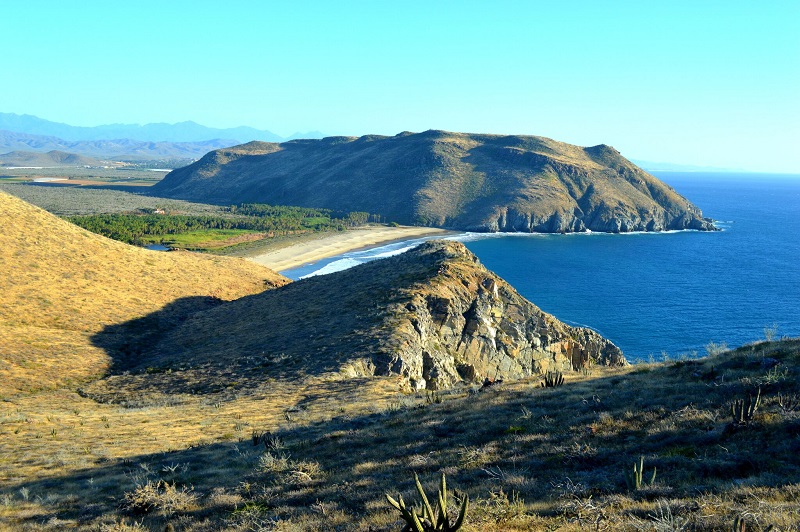
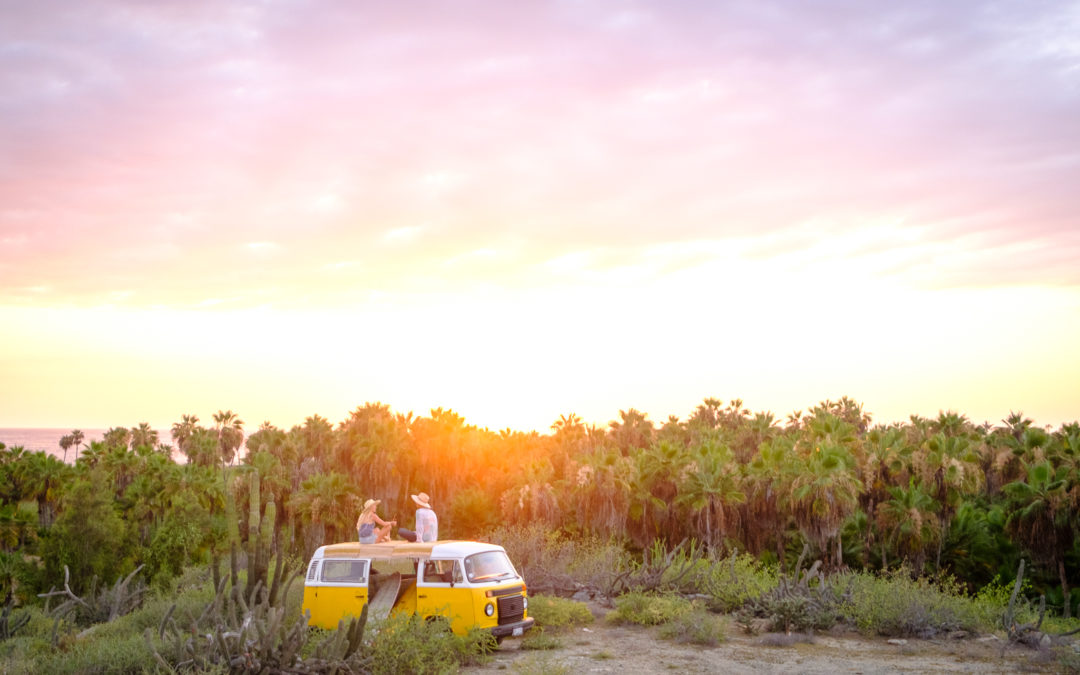
by Bryan Jáuregui | Adventure, Conservation, Whales, Wildlife
It’s the time of year when droves of homo sapiens inhabiting the upper section of the North American continent give themselves over to the irrepressible urge (what scientists might call a life-preserving instinct) to seek out the warm sand and cool vibes of Baja California Sur. Following the great highway routes mapped out by their ancestors, they migrate south in their Volkswagen campers, Airstreams, and Harleys, the miles made short and their dreams made large by the great beach music of their elders. When they arrive there is much feasting and celebrating (in a greatly reduced version of their native garb) as they share stories of their great migrations, some of which are over 4,000 miles long!
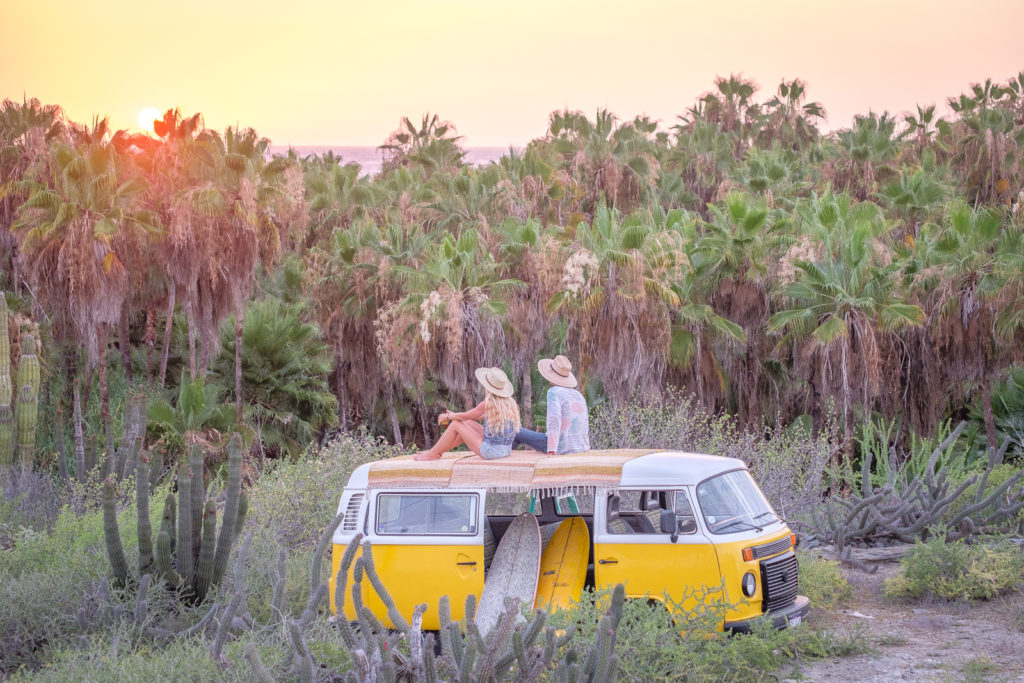
The neighbors are unimpressed. Take the North Pacific loggerhead sea turtle (Caretta caretta) for example. These loggerheads begin life on the shores of Japan, and many appear content to spend the balance of their days foraging for crab, jellyfish and other delicacies in the central Pacific. But just as with our homo sapiens, there are some outliers among the loggerheads who feel the irresistible pull of Baja California Sur, and swim 9,000 miles (14,500 km) to the waters of Baja in nothing more than the shell they were born in. Being cold-blooded, loggerheads need warm water to survive, yet this epic journey requires them to pass through 6,000 kilometers of water between Pacific basins that is so cold that Charles Darwin himself pronounced it “impassable” for the likes of sea turtles. Many species, like coral, are unable to cross this divide, yet a small group of loggerheads regularly makes the trip.
For years this feat remained a mystery, with scientists simply unable to account for the Japanese-born loggerheads showing up in the abundant feeding grounds of Baja. Then they got focused, and between 1997 and 2013 researchers in Japan and the US tagged hundreds of adolescent loggerheads and published their findings in April 2021. It turns out that the young loggerheads migrate in the years when the ocean surface temperature is much warmer than usual due to natural phenomena such as marine heat waves and El Niño. These conditions create a thermal corridor that allows the young turtles to keep swimming in warm water all the way to Baja. Mystery solved!
But what prompted the scientists to get focused? Adelita of course. Adelita was a loggerhead turtle who was captured off the coast of Baja as a juvenile and raised in captivity. She was released in 1996 with a satellite tag attached to her back, and proceeded to amaze the world by traveling over 14,000 kilometers across the Pacific Ocean, becoming the first animal to cross an ocean basin while being tracked. It was Adelita who confirmed to scientists that the loggerheads seen in Japan, the central Pacific and Baja all belong to the same distinct population. It was Adelita who led to the knowledge that this population nests exclusively in Japan then spreads out across the Pacific to forage for food. It was Adelita whose journey prompted insight into the bold loggerheads who spend their youth in the blissfully warm, food-rich waters of Baja, then return to Japan at 20-30 years of age to continue the species. It was Adelita who transformed loggerheads into the stuff of migration legend.
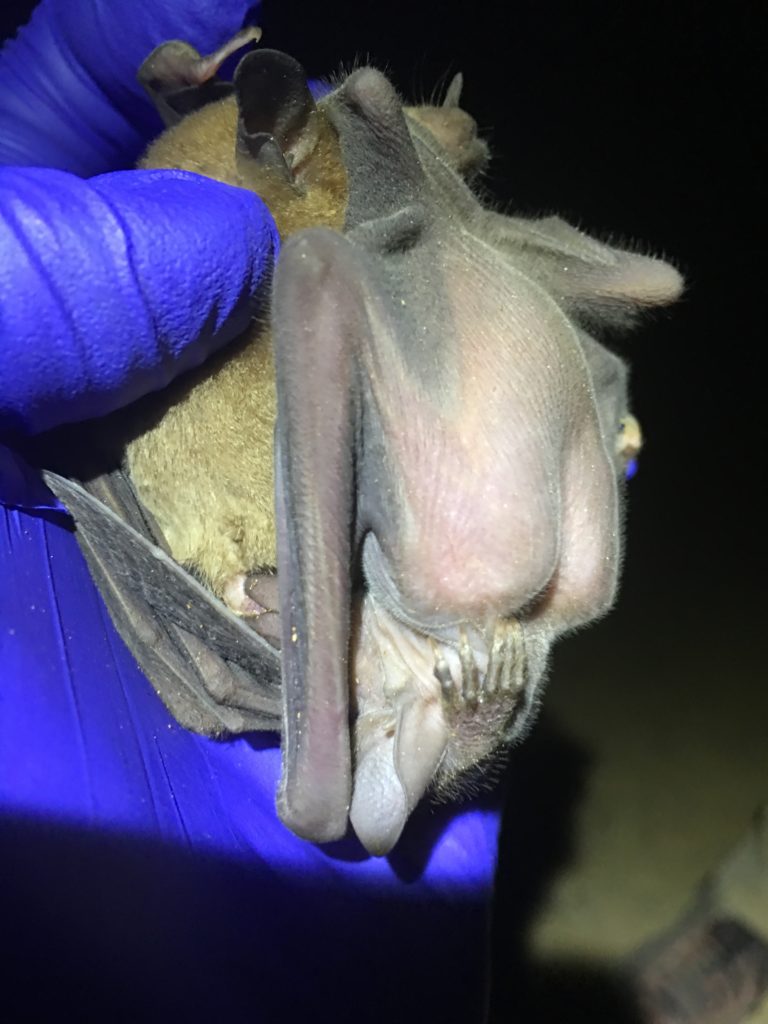 For its part, the lesser long-nosed bat (Leptonycteris yerbabuenae) may migrate only a few hundred miles each year from south-central Mexico to Baja California Sur, but the females of the species up the ante by doing it while heavily pregnant. According to Dr. Winifred Frick who has studied the bats of Baja for almost two decades, “In late March and early April the females follow the nectar corridor north from southern-central Mexico up along the Sinaloan coast, and we think they likely fly over the Sea of Cortez to the Baja peninsula. The lesser long-nosed bats are in the last stages of pregnancy when they make these spring migrations. Their feat is made all the more incredible when you realize that bat pups are roughly a third of the mother’s weight at birth – an enormous amount of extra baggage to carry on the migration route. The females then all give birth at the same time in mid-April in what is known as a synchronous birth pulse.” (It is generally acknowledged as a blessing that the migratory homo sapiens do not follow suit.) The babies nurse for 4-8 weeks, during which time it is not unusual for the mothers to fly 60 miles in each direction, each night, to their feeding grounds to obtain the nutrition needed for both mother and pup. Dr. Frick puts this feat into human terms. “It would be like leaving your newborn at home, jogging 60 miles to find a pop-up grocery store, eating all your meals at once, then jogging 60 miles home to your newborn.” In the process of feeding, the lesser long-nosed bats act as major pollinators for Baja California’s agaves and columnar cacti. When the cacti are pollinated and the babies are weaned, the cloud of bats then migrates back to the Mexican mainland. A very satisfactory migration job completed!
For its part, the lesser long-nosed bat (Leptonycteris yerbabuenae) may migrate only a few hundred miles each year from south-central Mexico to Baja California Sur, but the females of the species up the ante by doing it while heavily pregnant. According to Dr. Winifred Frick who has studied the bats of Baja for almost two decades, “In late March and early April the females follow the nectar corridor north from southern-central Mexico up along the Sinaloan coast, and we think they likely fly over the Sea of Cortez to the Baja peninsula. The lesser long-nosed bats are in the last stages of pregnancy when they make these spring migrations. Their feat is made all the more incredible when you realize that bat pups are roughly a third of the mother’s weight at birth – an enormous amount of extra baggage to carry on the migration route. The females then all give birth at the same time in mid-April in what is known as a synchronous birth pulse.” (It is generally acknowledged as a blessing that the migratory homo sapiens do not follow suit.) The babies nurse for 4-8 weeks, during which time it is not unusual for the mothers to fly 60 miles in each direction, each night, to their feeding grounds to obtain the nutrition needed for both mother and pup. Dr. Frick puts this feat into human terms. “It would be like leaving your newborn at home, jogging 60 miles to find a pop-up grocery store, eating all your meals at once, then jogging 60 miles home to your newborn.” In the process of feeding, the lesser long-nosed bats act as major pollinators for Baja California’s agaves and columnar cacti. When the cacti are pollinated and the babies are weaned, the cloud of bats then migrates back to the Mexican mainland. A very satisfactory migration job completed!
Given their enormous size and intelligence, it may not seem fair to bring gray whales (Eschrichtius robustus) into the Baja migration discussion. After all, over the average gray whale’s lifetime of annually migrating the roughly 12,000 miles roundtrip between the feeding grounds of the Arctic and the breeding grounds of Baja, they will have traveled the equivalent of a return trip to the moon. But the gray whales aren’t resting on their migratory laurels. In 2010 a gray whale showed up off the coast of Israel, then moved on to Spain before dropping off the scientific radar. Three years later a different gray whale swam the longest distance ever recorded in a marine vertebrate, more than 16,700 miles, lingering off the coast of Namibia for a bit before vanishing to parts unknown. (A leatherback turtle had previously held the world record of 12,774 miles across the Pacific. She couldn’t be reached for comment for this article.) National Geographic reports that scientists were so discombobulated by seeing gray whales on the wrong side of the world – they had never seen one outside of the Pacific Ocean before – that one compared the feeling to walking down a street in California and seeing a giraffe.
But these two whales just might just be the vanguard in a new migratory pattern for gray whales. Or, more precisely, the dusting off of an old one. Research suggests that millions of years ago gray whales lived in both the Atlantic and Pacific. The planet later cooled and an impenetrable Arctic barrier formed between the two populations, which then may have evolved into two distinct species. If so, then it is likely that the Atlantic gray whales are what naturalists of the 18th century called “scrag whales” and that they were decimated by the whaling industry while the Pacific whales survived. DNA and carbon isotopes from the bones of Atlantic whales proved to scientists that the Pacific and Atlantic gray whale populations are still closely related. In fact, it shows that the Pacific gray whale was responsible for colonizing the Atlantic Ocean, not just in a one-off, fluke event, but several times across the ages. As National Geographic puts it, the data proves that “Pacific gray whales have periodically swum across the Arctic Ocean and into the Atlantic and established populations that survived for millennia. The scientists can identify several waves of immigration. One took place about 79,000 years ago, and then three others happened more recently, between about 10,000 and 5,000 years ago.”
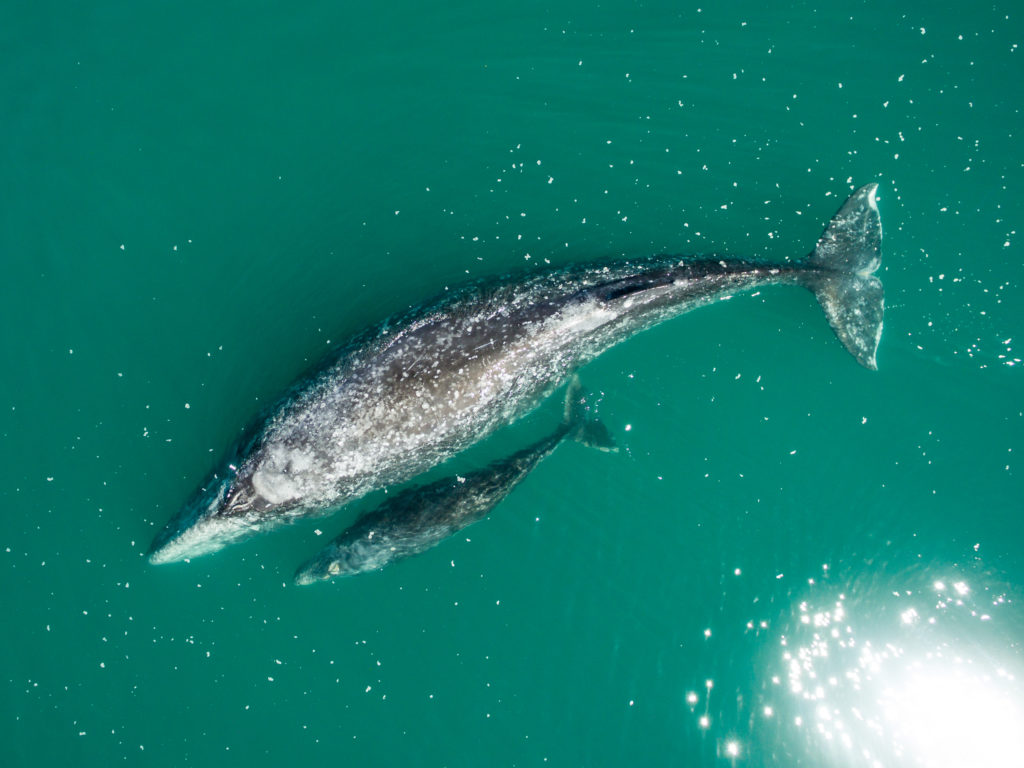
The loggerheads know how they did it: warm water, at least relatively speaking. 70,000 to 135,000 years ago the climate was so warm that the Arctic Ocean was open all year round, allowing the Pacific gray whales to freely migrate to the Atlantic. A new ice age cut off the Arctic once again, but when it ended 60,000 years later the Pacific gray whales renewed their Arctic passages to the Atlantic. A later cooling again closed the route, but now that the migrating homo sapiens are warming up the Arctic in record time, perhaps more gray whales will follow the lead of their friends spotted in Israel and Namibia, and strike out across the ice-free Arctic Ocean, looking to colonize the Atlantic once again.
Migrations long and short are a theme of life in Baja. In March and June thousands of mobula rays congregate to mate in the Sea of Cortez bays around La Paz and La Ventana, then migrate over 300 miles to the Pacific side of the peninsula. In spring and autumn each year the small Red Knot bird (Calidris canutus roselaari) follows the Pacific Flyway 9,300 miles from the Arctic to Tierra del Fuego – then back again – bulking up on nutritious grunion eggs along the Sea of Cortez each way. No matter the species or their origin, the migrators are part of the magic pull and thrill of Baja as we marvel at and celebrate their victories over incredible obstacles to reach the peninsula’s life-giving shores. As Thoreau may have mused, the homo sapiens who migrate to Baja may find that it is not the margarita they sought but the tonic of wildness they found of which they can never have enough. And that is as life-affirming a reason for migration as ever there was.
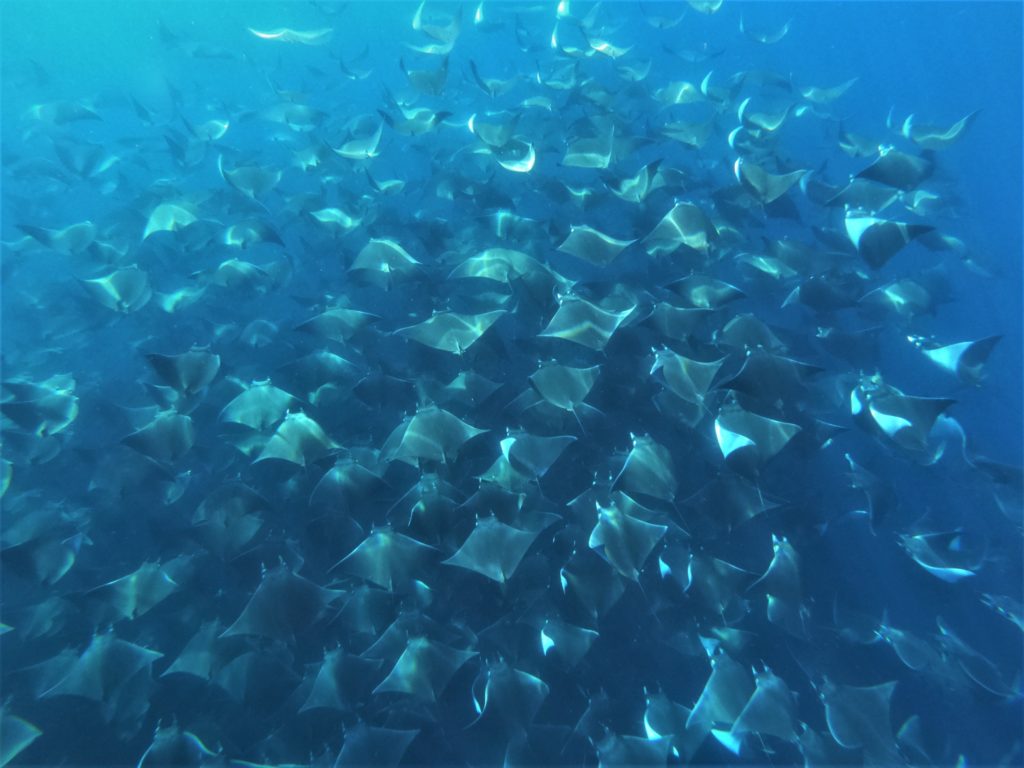
Notes:
- Thanks to Jose Sanchez of PureBajaTravels.com for inspiration on gray whale travels through the Arctic. Jose runs the best whale watching camp in Baja in Laguna San Ignacio.
- Details on the scientific research related to gray whale migrations across the Arctic came from Carl Zimmer’s article in National Geographic, Whales on the Wrong Side of the World.
- The Stanford study on loggerhead turtle migrations was originally published in Frontiers of Marine Science.
Todos Santos Eco Adventures (TOSEA) is the leading eco adventure company in Baja California Sur. TOSEA invites you to join them in the following initiatives to help preserve the habitats of Baja California that both our native and migratory species depend on:
Carbon Capture with Tomorrow’s Air. TOSEA is a carbon capture education partner with Tomorrow’s Air, and to date has supported the removal of one ton of carbon dioxide from the air. All homo sapiens who migrate to Baja are invited to join TOSEA in supporting this incredible project that was awarded Newsweek’s 2021 Future of Travel Award in the Visionary category
– it is not carbon offset, it is actually removing CO2 from the air and storing it deep underground. www.tomorrowsair.com.
Zero Waste Alliance of Todos Santos and Pescadero (ZWA). TOSEA is a proud supporter of the ZWA which is actively working to reduce the amount of waste that goes to the local landfill and build circular economies around that waste. All homo sapiens, both native and migratory, are invited to join the movement! www.facebook.com/alianzacerobasuratodossantos






 For its part, the lesser long-nosed bat (Leptonycteris yerbabuenae) may migrate only a few hundred miles each year from south-central Mexico to Baja California Sur, but the females of the species up the ante by doing it while heavily pregnant. According to Dr. Winifred Frick who has studied the bats of Baja for almost two decades, “In late March and early April the females follow the nectar corridor north from southern-central Mexico up along the Sinaloan coast, and we think they likely fly over the Sea of Cortez to the Baja peninsula. The lesser long-nosed bats are in the last stages of pregnancy when they make these spring migrations. Their feat is made all the more incredible when you realize that bat pups are roughly a third of the mother’s weight at birth – an enormous amount of extra baggage to carry on the migration route. The females then all give birth at the same time in mid-April in what is known as a synchronous birth pulse.” (It is generally acknowledged as a blessing that the migratory homo sapiens do not follow suit.) The babies nurse for 4-8 weeks, during which time it is not unusual for the mothers to fly 60 miles in each direction, each night, to their feeding grounds to obtain the nutrition needed for both mother and pup. Dr. Frick puts this feat into human terms. “It would be like leaving your newborn at home, jogging 60 miles to find a pop-up grocery store, eating all your meals at once, then jogging 60 miles home to your newborn.” In the process of feeding, the lesser long-nosed bats act as major pollinators for Baja California’s agaves and columnar cacti. When the cacti are pollinated and the babies are weaned, the cloud of bats then migrates back to the Mexican mainland. A very satisfactory migration job completed!
For its part, the lesser long-nosed bat (Leptonycteris yerbabuenae) may migrate only a few hundred miles each year from south-central Mexico to Baja California Sur, but the females of the species up the ante by doing it while heavily pregnant. According to Dr. Winifred Frick who has studied the bats of Baja for almost two decades, “In late March and early April the females follow the nectar corridor north from southern-central Mexico up along the Sinaloan coast, and we think they likely fly over the Sea of Cortez to the Baja peninsula. The lesser long-nosed bats are in the last stages of pregnancy when they make these spring migrations. Their feat is made all the more incredible when you realize that bat pups are roughly a third of the mother’s weight at birth – an enormous amount of extra baggage to carry on the migration route. The females then all give birth at the same time in mid-April in what is known as a synchronous birth pulse.” (It is generally acknowledged as a blessing that the migratory homo sapiens do not follow suit.) The babies nurse for 4-8 weeks, during which time it is not unusual for the mothers to fly 60 miles in each direction, each night, to their feeding grounds to obtain the nutrition needed for both mother and pup. Dr. Frick puts this feat into human terms. “It would be like leaving your newborn at home, jogging 60 miles to find a pop-up grocery store, eating all your meals at once, then jogging 60 miles home to your newborn.” In the process of feeding, the lesser long-nosed bats act as major pollinators for Baja California’s agaves and columnar cacti. When the cacti are pollinated and the babies are weaned, the cloud of bats then migrates back to the Mexican mainland. A very satisfactory migration job completed!

